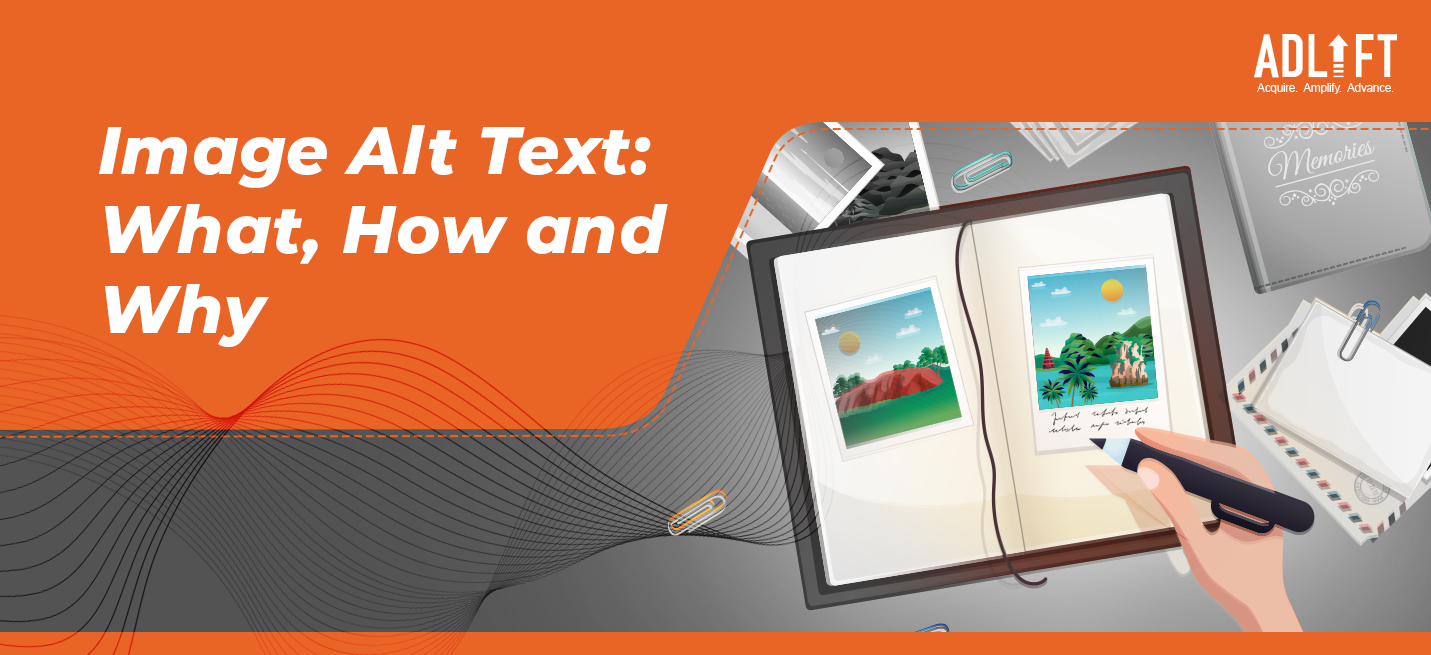Ever Wondered How Image Alt Text Helps SEO? We Got Your Answers!

Image alt text is a bit of a dark horse in the world of SEO. With images forming an integral part of most search engine result pages, image alt text is getting increasingly more important to get right. Without it, you could be missing out on a vital source of organic traffic. But what exactly is the image alt text, anyway, and what should you be doing with it? How does one get it right? Keep reading for everything you need to know about alt text and alt attributes.
What is Image Alt Text?
Have you ever tried to load a webpage on an infuriatingly slow internet connection? After waiting for what feels like hours, you might find that where images should have loaded, there are blank boxes with a bit of descriptive writing. That’s alt text! And chances are, you’ve already encountered some image alt text in the wild before.
Image alt text — also known as alt tags and sometimes even alt descriptions — refers to the writing that appears in the stead of an image, if, for whatever reason, the image can’t be loaded. Alt image text is also an extremely important accessibility measure for visually impaired people using screen readers.
Why is Image Alt Text Important?
Optimizing your image alt text is the key to creating great user experiences for the people visiting your site. One of the keyways alt texts does this is by creating an accessible experience for users with disabilities. Alt text ensures that your visual content is readable to assistive technology like screen readers, allowing users to get a sense of the image’s contents and purpose without needing to see it.
Accessibility aside, as suggested in the example earlier, image alt text can create better and more rounded user experiences for all your website visitors. Whether they’re reaching you from a remote location with a bad internet connection or are using old devices, image alt texts ensure that the purpose of the images you are using can be communicated even in the absence of the image itself.
Image alt text is also, interestingly, very useful if, for whatever reason, your photo fails — such as due to a broken link or even a hosting failure.
How Does Image Alt text Impact SEO?
Images can be a great way to add value to your content, especially if you’re trying to teach or demonstrate something. For this to be effective, images need to be embedded in your content itself. If, for instance, you’re offering a tutorial on installing software on a computer, you’ll want to offer screenshots to explain what they should be doing. By incorporating relevant keywords in your image alt text, your images will appear in the search results for those keywords. Neat, huh?
Optimized image alt text, when done right, allows search engines to turn your embedded images into search results as photos — either on the main page as a row or under the images tab. This can be an incredibly effective way of boosting organic traffic to your website.
Key to Writing Good Image Alt Texts
You’re sold on image alt texts, huh? Wondering how to make the best of them, and how you can write the best image alt texts on the internet? Here are a few things you can keep in mind as you get started on this exciting new journey.
- Describe your image clearly and specifically; make sure you use context to clarify what exactly is happening in the image.
- Use important keywords — always organically and naturally — in your alt text to provide context and boost rankings on search engines. Don’t, however, overdo this, and if your keyword doesn’t work in the alt image text, err on the side of caution by not using it. You also don’t need keywords in every alt image text on your page; one or two using the most important keywords will do.
- Keep it short and snappy. Image alt text generally shouldn’t exceed 125 characters, as past this limit, many screen readers stop reading for the sake of clarity. Similarly, don’t waste time including phrases like “image of” or “picture showing” — get right to the point.
- Keep your alt attributes free of spelling and grammatical errors. This is pretty self-explanatory: it’s key for user experience as well as search engines trying to read your site.
- Most importantly, all your images will not need alt text. Images that are purely decorative, or already have a caption with a description, do not need alt text; this will simply lead to repetition.
Examples of Impactful Image Alt Text
Here are a few examples to help you get a sense of what you should be keeping in mind.

Instead of: Cake in the oven.

Instead of: man and woman on a ship.

Instead of: a student with laptop.
All three examples keep it short and snappy while providing context. Each of these alt texts provides a clear and concrete sense of why it is being used and what it is demonstrating. You can, for example, easily imagine for yourself what kind of pages you’ll find them on. They also don’t overuse any keywords even as they are descriptive and closely related to the content of their host pages.
Conclusion
As you might have already gathered, getting alt attributes right can be a tricky challenge. There is, after all, a lot to get right! And if you already have a website, where would you even start? By working with an experienced digital marketing company like AdLift, you’ll have a team of experts by your side who can help you perform a comprehensive audit of your website and help you incorporate image alt text effectively and quickly.
The quicker you get on the alt text bandwagon, the more your SEO strategy will benefit in the long run!
FAQs
What does alt text mean?
Image alt text explains why a particular image is used where it is on your webpage. It also provides accessibility to users accessing your content using screen readers.
Can people see your alt text?
If your image is loading properly and everything is working as it should, only users using screen readers will have access to the alt text. If, however, your image fails to load for any reason, all users will be able to read your alt text.
How long should alt text be?
Image alt text ideally shouldn’t exceed 125 characters to play well with screen readers. However, generally speaking, alt attributes must be as long as needed to provide a clear description and the required context.
Do all images need alt text?
No. Decorative images and images with descriptive captions do not need alt text.
Is alt text the same as metadata?
Yes, alt text is a type of metadata. However, the metadata comprises many other elements and is not limited to just alt attributes.
Recent Posts
- Google Search Revolutionized for Educational Videos November 16, 2023
- Bidding Adieu to Google’s Page Experience Report November 9, 2023
- Google November 2023 Core Update November 3, 2023
- Unmasking Google’s October 2023 Spam Update October 5, 2023
- Unleash SEO Power: Must-Have Chrome Extensions for Website Success September 20, 2023
- SEO-Friendly URL Optimization: Mastering Structure for Better Ranking September 20, 2023
- Real Estate Marketing Ideas: Crafting a Results-Driven Marketing Strategy September 20, 2023
- The Anatomy of a Broken Link: Causes, Effects, and Solutions September 15, 2023
- Crafting an Informative FAQ Section: A Step-by-Step Guide September 14, 2023
- Local Business Schema Markup: Elevate Your Brand With The Magic September 14, 2023
Get
in Touch
Contact AdLift for a 360-degree marketing plan
